The Case for High Yield Bonds Today

John Yovanovic, CFA
Co-Head of Leveraged Finance

Andrew Karlsberg, CFA
Portfolio Risk Manager and Investment Strategist, Leveraged Finance

Jeremy H. Burton, CFA
Portfolio Manager, US High Yield and Leveraged Loans
We believe high yield bonds today are an attractive asset class in a diversified portfolio, with all-in yields adequately compensating investors for credit risk amid moderate default expectations. We view valuations as broadly fair – not notably cheap, but not rich enough to justify sitting on the sidelines.
High yield compares favorably to other risk assets, particularly equities, where price/ earnings ratios remain elevated, volatility is likely to persist, and earnings growth and capital expenditures are concentrated in a small cohort of companies.
With its compelling yields, we view the upper portion of the high yield market – BB and B rated bonds – as a sweet spot for investors, and we believe default risk can be mitigated by minimizing exposure to the CCC segment.
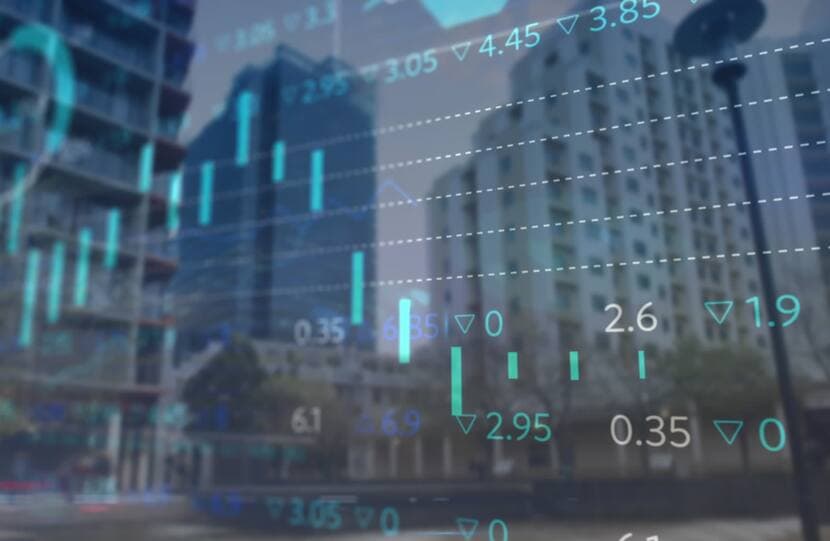
High yield bonds are at an interesting juncture. While spreads are trading tight relative to historical levels, all-in yields are closer to the median of the historical range over the last 20 years. Moreover, the weighted average price still offers a meaningful discount to par, and weighted average duration and tenor levels are near historical lows. This divergence reflects several factors that have created an attractive setup for high yield investors – and as we explain, the higher-rated (BB and B) portion of the market looks especially compelling.
The divergence between yield and spread owes primarily to the massive widening in Treasury yields, with the 10-year moving from 0.5% in the third quarter of 2020 to above 4% today. As the chart shows, the result is a situation where the option-adjusted spread (OAS) currently stands at 304 basis points (bps), toward the tighter end of the 20-year historical range, but the yield to worst (YTW), at 6.99%, is still appealing.
High yield bonds have provided attractive total returns in periods following the 2022 back-up in Treasury rates, with the coupon return providing the largest component to overall total returns. We expect this trend to continue given the backdrop of an issuer base with sound fundamentals and more debtholder-friendly balance sheet management practices over the past several years.
Yields on High Yield Bonds Remain Attractive
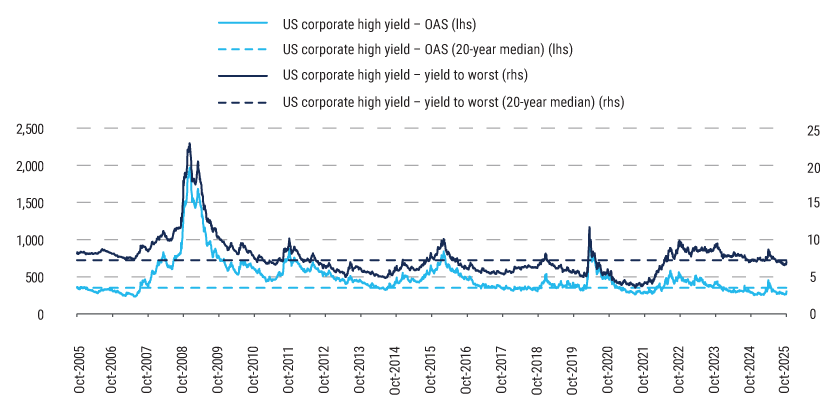
Source: Bloomberg US Corporate High Yield Bond Index as of 13 October 2025.
In addition, historically robust primary high yield issuance in the second half of 2020 and 2021, when market yields were below 5% for an extended period, has given rise to a segment of the high yield market featuring low-coupon but low-priced bonds. A weighted-average bond price of $97.24 is lower than the median price for the 20-year range. Primary issuance was lower in 2022 and 2023, resulting in option-adjusted duration of 2.94 years and a tenor of 4.80 years, both of which are at or near 20-year lows.
Lower duration and bond prices are key reasons why we view yields and total returns as attractive on a risk-adjusted basis. We expect a “pull to par” tailwind to support the market in the coming quarters as issuers look to refinance upcoming debt maturities. High yield bond issuance has surged since June, as many callable bonds issued in 2022 and 2023 are being refinanced before quarter-end blackouts and the typical fourth-quarter slowdown.
This combination of low price, high yield, and low duration positions the high yield bond market for attractive total return potential. We think the high yield asset class is attractive in today’s overall investment context given that the yields on floating-rate fixed income asset classes are expected to decline as the Fed lowers the policy rate, and given rich valuations for equity markets, with index prices at all-time highs. And critically, obtaining exposure does not require compromising on credit quality. All of the comparisons to historical medians noted above are just as attractive (or more so) when excluding the CCC rated portion of the market (i.e., BB to B ratings only).
Price, Yield, Duration, and Tenor Are All at Historically Attractive Levels

Sources: Bloomberg US Corporate High Yield Bond Index and Bloomberg US Corporate Ba to B High Yield Bond Index, both as of 13 October 2025. Medians and percentiles refer to 20-year ranges.
With inflation and interest rates looking set to remain higher for longer, some deterioration in credit metrics has been unavoidable. We note that the high yield bond market is starting from a point of solid corporate fundamentals. Issuers are still benefiting from the extremely low fixed interest rates currently in their capital structures, but debt service has started to consume more cash flow as those positions are refinanced at market rates. This has occurred over the past 18 months or so. While we expect stress in the high yield market to be muted overall, it will be most acute in the lower-rated portion of the market.
Interest Coverage Has Fallen, But From an All-Time High

Source: BofA Global Research, High Yield Credit Chartbook, as of 30 September 2025.
What about default risk? In our view, by avoiding CCC issuers, investors can largely sidestep that risk. Recessions clearly put significant stress on issuers, but historically, credit events and restructurings have occurred predominantly in the CCC segment. While a recession is not our base case scenario in the coming quarters, we are seeing some evidence of a weaker job market, with benchmark revisions from the Bureau of Labor Statistics pointing to fewer jobs added in 2024 and early 2025, and we are seeing some consumer lending stress in the form of rising delinquency rates for subprime auto and credit card loans.
Given relatively tight credit spreads, we prefer a slightly defensive, lower-risk stance when constructing high yield portfolios. While we believe defaults will be lower than in past recessionary cycles, those that do occur will likely be concentrated among the lower-rated issuers, as they have been historically (see chart), and we favor a selective approach to credits rated CCC and lower.
High Yield Default Risk Is Concentrated in Lower-Rated Issuers
Default rate by rating tier
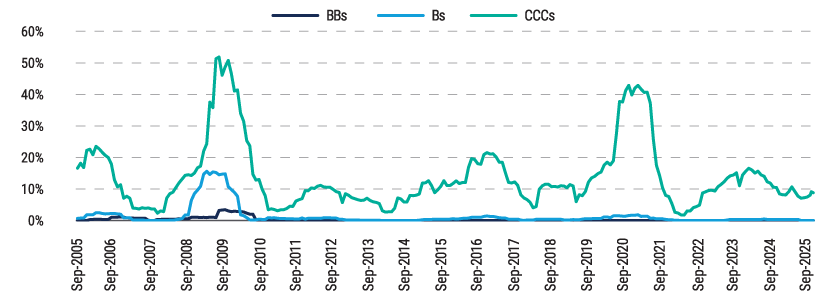
Source: BofA Global Research, High Yield Credit Chartbook, as of 30 September 2025.
The result is that we see the best risk-adjusted return potential in the BB to B segment of the market (see chart). Against this backdrop, the higher-quality end of high yield may provide the best of all possible worlds: historically high yields with very low potential defaults.
BB to B Rated Issuers Make Up the Largest Share of the High Yield Bond Market
Market value (%)
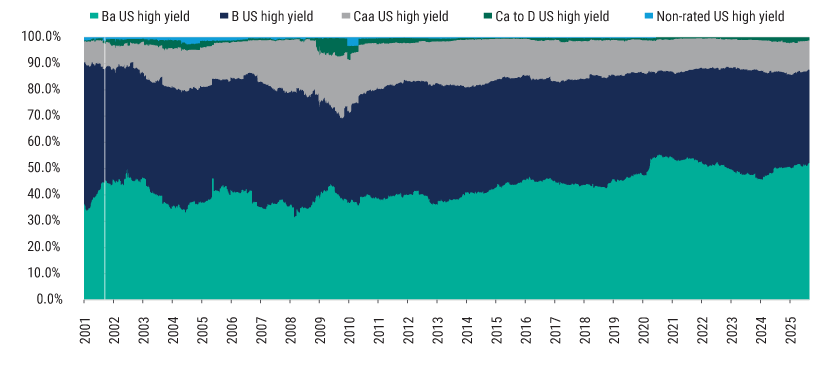
Source: BofA Global Research, High Yield Credit Chartbook, as of 30 September 2025.
The average credit quality of the high yield market has improved over time, with the BB rated segment growing as the CCC segment shrank. While these trends have abated somewhat in recent years, the deceleration is largely due to high levels of rising stars (upgrades to BBB from BB) paired with relatively low levels of fallen angels (downgrades to BB or lower from BBB), both of which indicate strong corporate credit trends.
Our view remains that all-in yields for the high yield market are adequately compensating investors for credit risk amid moderate default expectations, and we view high yield bonds as an attractive asset class in a diversified portfolio. We also view high yield favorably relative to other risk assets, particularly equities, where price/earnings ratios remain elevated and earnings growth and capital expenditures are concentrated among a small number of companies. We expect equity price volatility to persist.
Over the past 42 years – since the 1983 inception of the Bloomberg (fka Barclays/Lehman Brothers) high yield bond indices – high yield bonds have captured roughly 71% of the total return of the S&P 500 with only 55% of the risk.¹ This has resulted in superior risk-adjusted returns, as measured by Sharpe ratios. Comparisons of high yield relative to equity portfolios that include mid-cap and small-cap equities or international equities look even more favorable, as these equity asset classes have not benefited as much from the small cohort of technology companies that have made an outsized contribution to the S&P 500’s total return. Historically, the income component of high yield bond returns has offset much of the price volatility – and the mid- and higher-quality segments have historically provided even better risk-adjusted returns.
Higher-Quality High Yield Bonds Have Delivered Superior Risk-Adjusted Returns
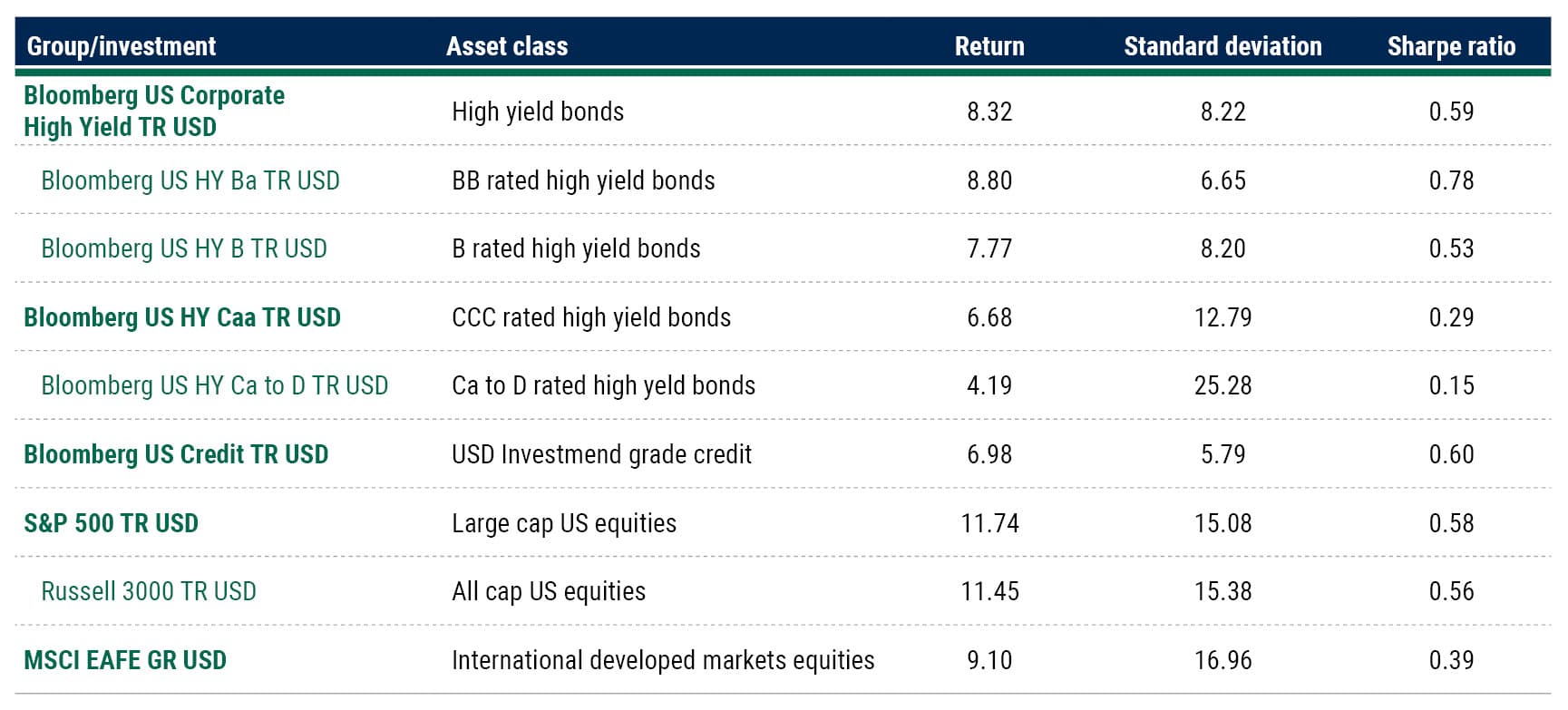
Source: Bloomberg as of 30 September 2025.
Key investor takeaways
While high yield spreads are relatively tight, yields are still attractive. Given higher Treasury rates, spreads are a smaller component of all-in yields for the high yield bond asset class than they were for much of the past 15 years. Weighted average bond prices that still offer a discount to par and relatively low duration risk make those yields quite attractive on a risk-adjusted basis. While we acknowledge that the volatile US policy backdrop could create a more challenging environment for issuers, we believe investors can mitigate that risk by avoiding or minimizing exposure to CCC rated bonds. With its compelling yields, the upper portion of the high yield market – BB and B rated bonds – is a sweet spot for investors.
We view high yield bond valuations as broadly at fair value today – not notably cheap, but not rich enough to justify sitting on the sidelines. In this environment, we believe the opportunity lies not in timing the entry point but in being invested, so as not to miss out on the potential for idiosyncratic mispricings that active managers can capture.
Disclosure
Investing involves risk, including possible loss of principal. The information presented herein is for illustrative purposes only and should not be considered reflective of any particular security, strategy, or investment product. It represents a general assessment of the markets at a specific time and is not a guarantee of future performance results or market movement. This material does not constitute investment, financial, legal, tax, or other advice; investment research or a product of any research department; an offer to sell, or the solicitation of an offer to purchase any security or interest in a fund; or a recommendation for any investment product or strategy. PineBridge Investments is not soliciting or recommending any action based on information in this document. Any opinions, projections, or forward-looking statements expressed herein are solely those of the author, may differ from the views or opinions expressed by other areas of PineBridge Investments, and are only for general informational purposes as of the date indicated. Views may be based on third-party data that has not been independently verified. PineBridge Investments does not approve of or endorse any republication of this material. You are solely responsible for deciding whether any investment product or strategy is appropriate for you based upon your investment goals, financial situation and tolerance for risk.



